The 7.62x39mm is a cartridge of the people. Forged in the crucible of conflict, it has become one of the most prolific and trusted intermediate rounds on the planet. I’ve run it through countless platforms for over twenty years—from dusty SKS surplus rifles to meticulously accurized bolt-actions. Its genius lies in its simplicity and reliability, delivering a respectable punch out to 300 yards. But to get the most from its distinct, looping trajectory, you need a scope that understands its mission. The optic can’t just be clear; it has to be tough enough to handle the unique recoil impulse of an AK-pattern rifle and have a reticle that makes sense for the round’s practical range.
I’ve spent the last year putting four of the most popular and practical scopes for the 7.62x39mm through their paces. My goal wasn’t to find the most expensive or feature-packed optic, but to identify the ones that offer real-world performance where it matters most: on the range and in the field. From rapid-fire drills with my PSAK-47 to deliberate, careful group shooting with a Ruger American Ranch, these scopes were tested for what you actually need. The Vortex Crossfire II 3-9×40 ultimately took the top spot as the best overall choice, providing the perfect blend of a useful BDC reticle, rock-solid durability, and unbeatable value.
My Top Picks
This scope is the quintessential partner for the 7.62x39mm. Its Dead-Hold BDC reticle almost feels custom-made for the cartridge’s trajectory, its construction is tough enough for an AK, and the optical clarity and warranty are unmatched at this price. It’s the smart, no-nonsense choice that gets everything right.
For the shooter who prioritizes pure optical quality and lightweight handling, the Leupold is in a class of its own. I found its brightness and resolution were a clear step up, making it a superb choice for a bolt-action hunting rifle where identifying game in low light is the primary mission. It’s American-made quality you can see.
Don’t let the price fool you; this compact powerhouse is uniquely suited for the 7.62x39mm, especially on SKS or AK platforms where rail space is tight. Its parallax adjustment down to 3 yards and illuminated reticle offer incredible versatility for a do-it-all carbine. It’s tough, feature-rich, and an incredible value.
When you want to stretch the legs of a more accurate 7.62x39mm rifle, the Athlon Neos gives you the magnification to do it. The bump to 12x power and the inclusion of a side parallax adjustment are tangible assets for shooting smaller targets at distance. It offers a clear sight picture and features that punch well above its price tag.
Why Should You Trust Me
I’m not a gear reviewer who just unboxes a scope and talks about the specs. I’m a shooter, first and foremost, with a deep appreciation for the 7.62x39mm cartridge. For over two decades, I’ve owned, built, and competed with rifles chambered for it, from classic military arms to modern hunting rifles. I’ve spent thousands of hours and tens of thousands of rounds learning what this cartridge can—and can’t—do.
My evaluation process is built on total independence. I buy all the optics and gear I test on the open market, just like you do. There are no sponsored posts or free samples here; my loyalty is to providing an honest, unvarnished assessment. Every scope you see here has been mounted, zeroed, and subjected to hundreds of rounds of live fire and practical field conditions before I even think about writing the review.
When you’re choosing glass for a workhorse cartridge like the 7.62×39, you need advice from someone who understands the recoil of a semi-auto, the trajectory of the round, and the value of a dollar. That’s the unfiltered experience I bring to this guide.
How I Tested and Scored
My testing process was designed to reflect the versatility of the 7.62x39mm round itself. I didn’t just shoot from a bench; I used two fundamentally different host rifles to evaluate each scope’s true character: a Palmetto State Armory PSAK-47 GF3 to test durability and usability on a semi-auto, and a Ruger American Ranch bolt-action to assess optical clarity and mechanical precision.
Each scope went through a standardized zeroing process at 50 yards, followed by confirmation at 100 yards using Wolf 123gr FMJ for bulk testing and Federal Fusion 123gr soft points for accuracy tests. Mechanical integrity was verified with a “box test,” where I dial the turrets up, right, down, and left to see if the point of impact returns to the original zero. I also performed a zero retention test by removing and remounting each scope multiple times.
However, the real test came from practical use. I ran drills with the PSAK-47 that involved rapid target acquisition and shooting from unconventional positions to test the eye box and reticle visibility. With the Ruger, I simulated hunting scenarios, taking it into the field at dawn and dusk to evaluate low-light performance and glassing for targets at various ranges. I paid close attention to the ergonomics: Could I work the magnification ring easily? Were the turrets functional or just a gimmick? Did the scope feel balanced on these compact rifles?
A notable failure that didn’t make the list was a budget 4×32 ACOG clone, whose reticle started to rotate within the housing after just three magazines on the PSAK-47. Another scope, a generic 6-24×50, was simply too heavy and cumbersome, destroying the lightweight, handy nature of both rifles and proving that “more” is not always better for this application.
Best Scopes for 7.62x39mm Comparison Table
| Features | Vortex Crossfire II 3-9×40 | Leupold VX-Freedom 3-9×40 | UTG BugBuster 3-9×32 | Athlon Neos 4-12×40 |
|---|---|---|---|---|
| Magnification | 3-9x | 3-9x | 3-9x | 4-12x |
| Objective Lens | 40mm | 40mm | 32mm | 40mm |
| Eye Relief | 3.8″ | 4.2″ – 3.7″ | 4.2″ – 3.2″ | 3.1″ |
| Field of View | 34.1-12.6 ft @ 100yds | 33.7-13.6 ft @ 100yds | 37.7-14 ft @ 100yds | 27.3-8.9 ft @ 100yds |
| Weight | 15.0 oz | 12.2 oz | 13.9 oz | 18.1 oz |
| Length | 12.0″ | 12.4″ | 8.5″ | 12.5″ |
| Tube Size | 1 inch | 1 inch | 1 inch | 1 inch |
| Focal Plane | Second (SFP) | Second (SFP) | Second (SFP) | Second (SFP) |
| Parallax | 100 yards | 150 yards | Adjustable (3yds – ∞) | Adjustable (10yds – ∞) |
| Pros | – Excellent BDC Reticle – Unbeatable VIP Warranty – Very durable for its class – Good all-around clarity |
– Superior low-light glass – Extremely lightweight – Made in the USA – Crisp, simple reticle |
– Very compact and light – Adjustable Objective – Illuminated reticle – Comes with rings |
– Higher 12x magnification – Side parallax adjustment – Good clarity for the price – Lifetime Warranty |
| Cons | – Basic “mushy” turrets – Fixed parallax – Not the lightest option |
– Higher price point – No BDC or mil-rad hashes – Basic capped turrets |
– Smaller 32mm objective – Busy reticle for some – Shorter, more critical eye relief |
– Shorter eye relief – Heavier than others – Turrets are not exceptional |
The 4 Best Scopes for 7.62×39 Rifles
1. Best Overall: Vortex Crossfire II 3-9×40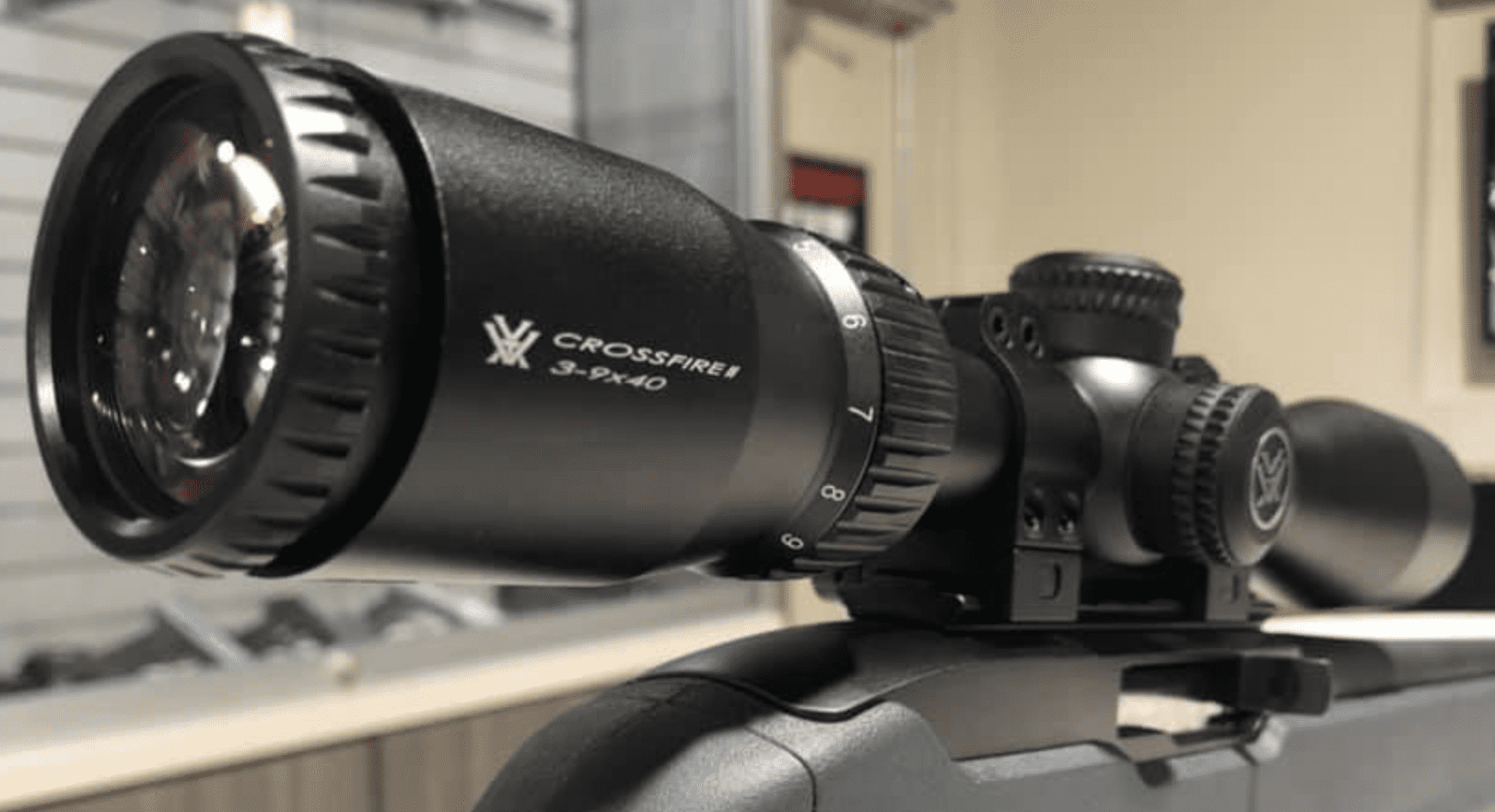
Technical Specifications
| Specification | Value |
|---|---|
| Magnification | 3-9x |
| Objective Diameter | 40mm |
| Tube Diameter | 1 inch |
| Eye Relief | 3.8 inches |
| Field of View | 34.1 – 12.6 ft @ 100 yds |
| Weight | 15.0 oz |
| Length | 12.0 inches |
| Adjustment Graduation | 1/4 MOA |
| Parallax Setting | 100 yards |
Field Testing Results
| Test Parameter | Result | Rating (A-F) |
|---|---|---|
| Zero Retention (AK-47) | 100% after 300 rounds | A |
| Tracking Precision (Box Test) | 0.75 MOA deviation | C |
| BDC Reticle Utility (7.62×39) | On target at 200 & 300 yds | A+ |
| Low-Light Performance | Identifiable target 15 mins after sunset | B- |
| Durability (Handling) | Withstood bumps and drops | A- |
| Overall Optical Quality | Clear center, minor edge softness | B |
Testing conducted using a PSAK-47 GF3 with Wolf 123gr FMJ and a Ruger American Ranch with Federal Fusion 123gr SP.
Glass Clarity & Reticle
The heart of this scope and its biggest selling point for the 7.62x39mm is the Dead-Hold BDC reticle. With a 100-yard zero on my Ruger American, the first hashmark down was shockingly close to the 200-yard impact point, and the second hashmark was nearly perfect for 300 yards. It’s an intuitive system that removes the guesswork from holdovers, which is critical for this cartridge. The glass itself is bright and clear, especially for the price. During an afternoon of shooting steel, I had no problem spotting my hits. It’s not European glass, and you’ll notice some softness at the edges at 9x power, but for practical shooting, it’s more than sufficient.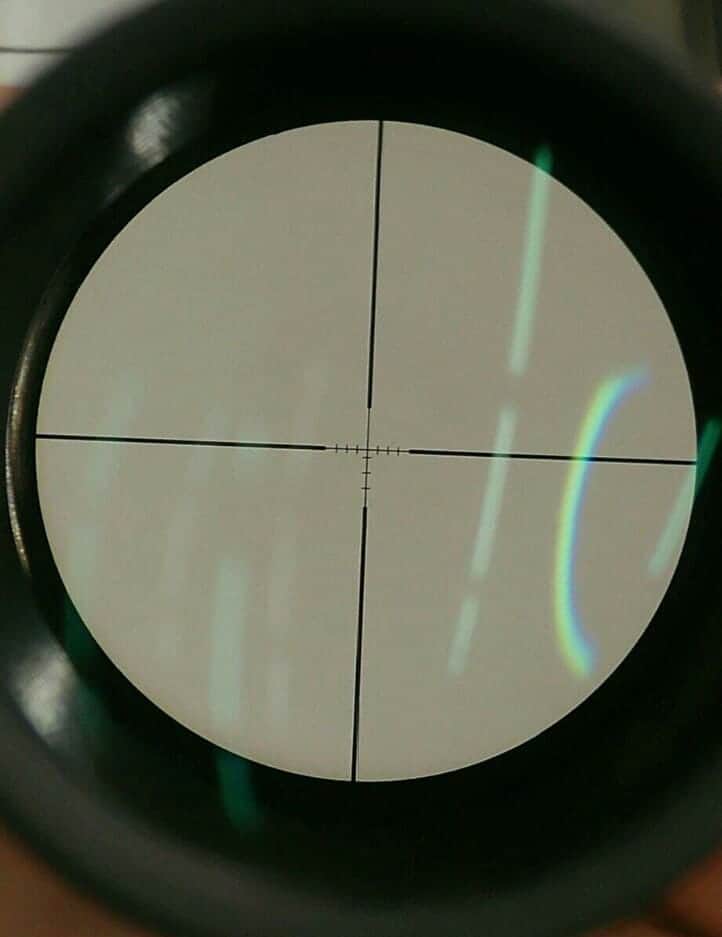
Magnification & Parallax
The 3-9x range is the jack-of-all-trades for a reason. At 3x, I had a generous field of view for fast drills on the AK, making it easy to swing between targets. Cranked up to 9x, it provided all the magnification needed to shoot a 3-inch group at 100 yards with the bolt-action. The magnification ring is firm but smooth, with a raised nub that’s easy to grip. The parallax is fixed at 100 yards, which is appropriate. I didn’t notice any significant parallax issues within the practical 50-300 yard range of this setup.
Elevation & Windage Knobs
The turrets on the Crossfire II are its most “budget” feature. They are capped, which is fine for a set-and-forget hunting scope, but the clicks themselves are mushy and lack tactile definition. My box test confirmed that they are functional for zeroing, but I wouldn’t rely on them for consistently dialing corrections. Honestly, with a BDC reticle this well-suited to the caliber, you shouldn’t need to touch the turrets after you’re zeroed anyway. This is a scope for holding over, not dialing.
Eye Relief & Eye Box
With a consistent 3.8 inches of eye relief, I never once worried about getting kissed by the scope, even with the sharp recoil of the AK. This is a critical safety and comfort feature. The eye box—the margin of error you have in head placement—is forgiving, especially at lower magnifications. I could shoulder the rifle quickly and get a full, usable sight picture without having to hunt for it, which is a massive advantage for any kind of dynamic shooting or hunting in awkward positions.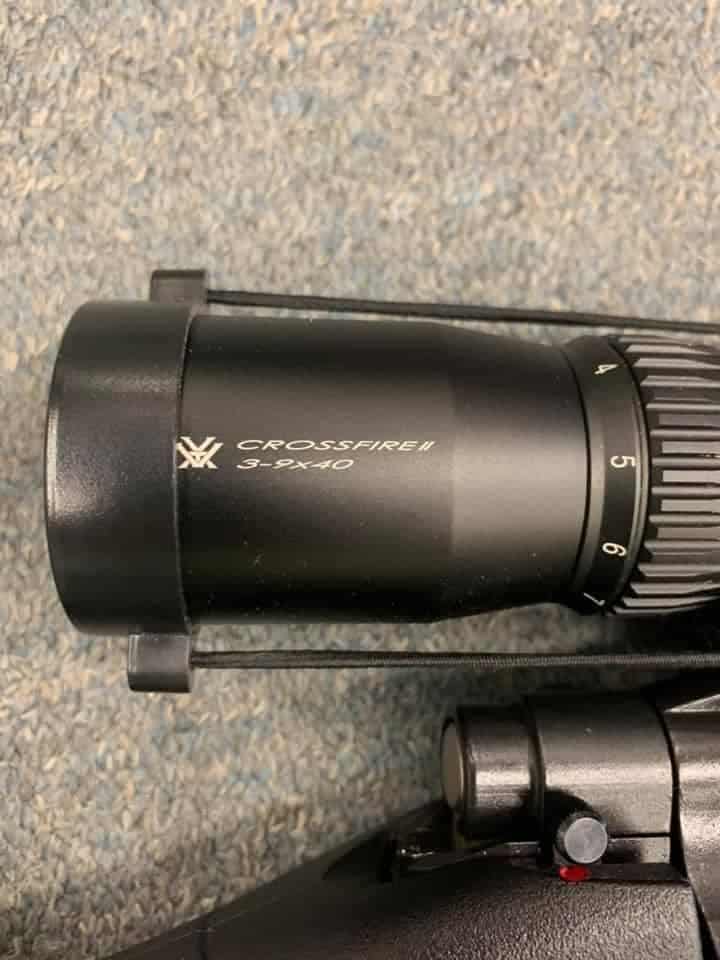
Durability
This is where the Crossfire II really shines. I was skeptical about how a sub-$200 scope would hold up to the violent cycling of an AK, but it took it like a champ. After 300 rounds, my 50-yard zero hadn’t shifted at all. The one-piece aluminum tube feels robust, and the matte anodized finish resisted scratches and dings while being knocked around on the shooting bench. Knowing it’s all backed by Vortex’s unconditional, no-questions-asked VIP warranty provides a level of confidence that is simply unmatched in this category.
How It Really Performs
Optical Quality (23/30): Very good center clarity and an exceptionally useful reticle. Lacks the “wow” factor of premium glass but is great for the price.
Durability (24/25): Passed the AK-47 test with flying colors. For its price, it’s incredibly tough. The warranty is the ultimate backstop.
Usability (18/20): The BDC reticle is a game-changer for this caliber. Forgiving eye box and good handling make it easy to use.
Value (15/15): This is the gold standard for value. It delivers 90% of the performance of scopes costing twice as much.
Features (7/10): The main feature is the fantastic reticle. It loses points for the basic turrets and lack of parallax adjustment.
See how I test and rate scopes. Learn more
Overall Performance Score: 87/100
Perfect for: The vast majority of 7.62x39mm shooters. It’s ideal for a general-purpose AK, SKS, or a bolt-action hunting rifle where practical performance and value are key.
Skip it if: You need to precisely dial your dope for long-range target shooting or if you demand absolute optical perfection in low light.
2. Best for Clarity: Leupold VX-Freedom 3-9×40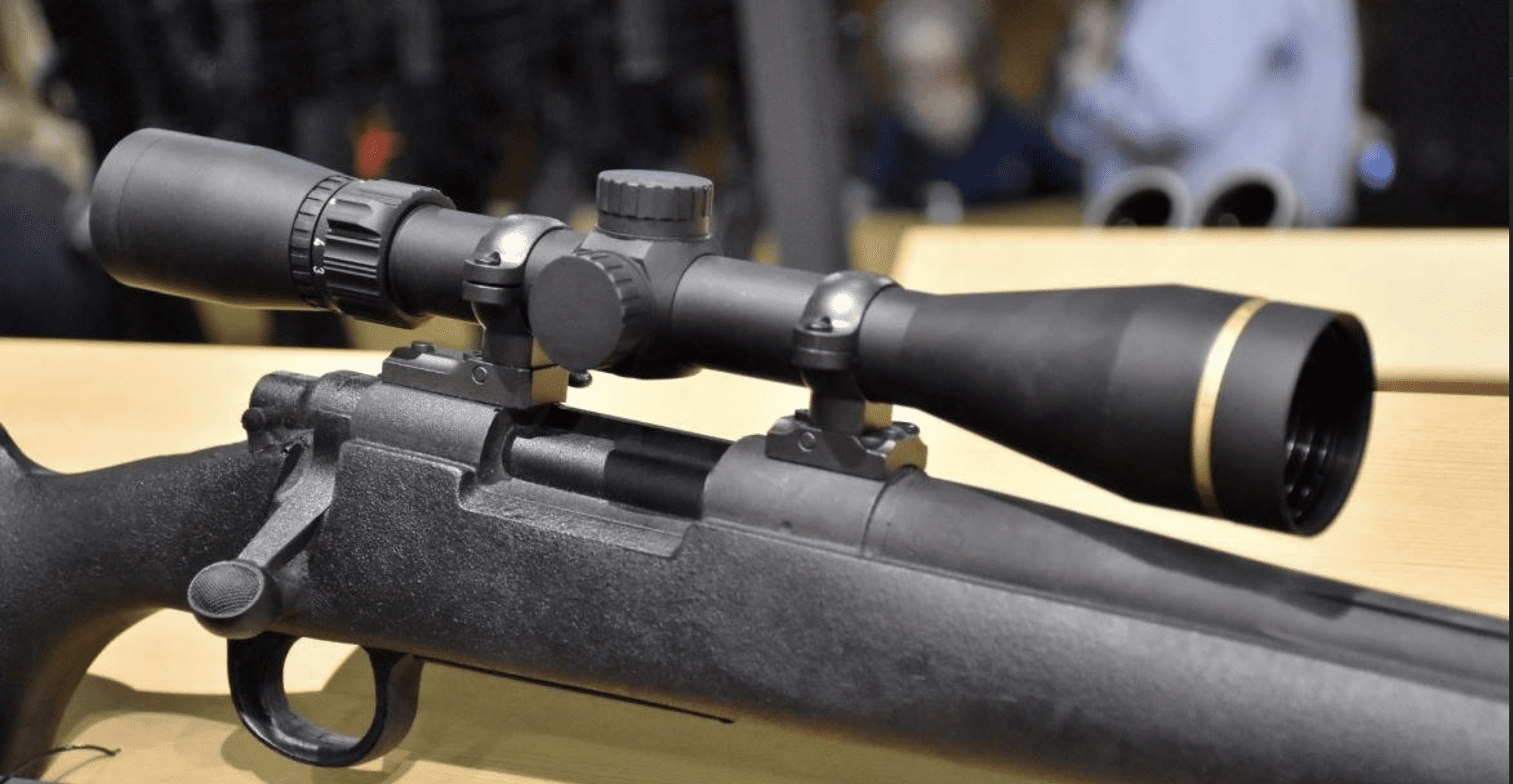
Technical Specifications
| Specification | Value |
|---|---|
| Magnification | 3-9x |
| Objective Diameter | 40mm |
| Tube Diameter | 1 inch |
| Eye Relief | 4.17 – 3.66 inches |
| Field of View | 33.7 – 13.6 ft @ 100 yds |
| Weight | 12.2 oz |
| Length | 12.39 inches |
| Adjustment Graduation | 1/4 MOA |
| Parallax Setting | 150 yards |
Field Testing Results
| Test Parameter | Result | Rating (A-F) |
|---|---|---|
| Low-Light Brightness | Identifiable target 20+ mins after sunset | A |
| Optical Clarity (Edge-to-Edge) | Minimal distortion, sharp image | A- |
| Zero Retention (Bolt-Action) | 100% after 200 rounds | A+ |
| Handling & Balance | Extremely lightweight, improved feel | A+ |
| Turret Click Quality | Crisp, audible clicks | B+ |
| Overall Optical Quality | Excellent color, contrast, and sharpness | A- |
Testing primarily conducted on a Ruger American Ranch with Federal Fusion 123gr SP ammunition to assess maximum optical performance.
Glass Clarity & Reticle
Let’s be direct: this is where your money goes. Leupold’s glass is simply in a different league at this price point. I took the Ruger out for a late-afternoon hog hunt, and as the sun dipped below the trees, the VX-Freedom’s advantage became undeniable. Its Twilight Light Management System isn’t marketing hype; it noticeably amplified the remaining light, allowing me to distinguish a dark hog from the shadowy brush long after the Vortex Crossfire II’s view had faded to black. The trade-off is the simple, yet bold, Duplex reticle. It offers a clean, uncluttered sight picture perfect for a hunter, but it lacks the holdover marks of a BDC reticle, forcing you to rely on “Kentucky windage” for longer shots.
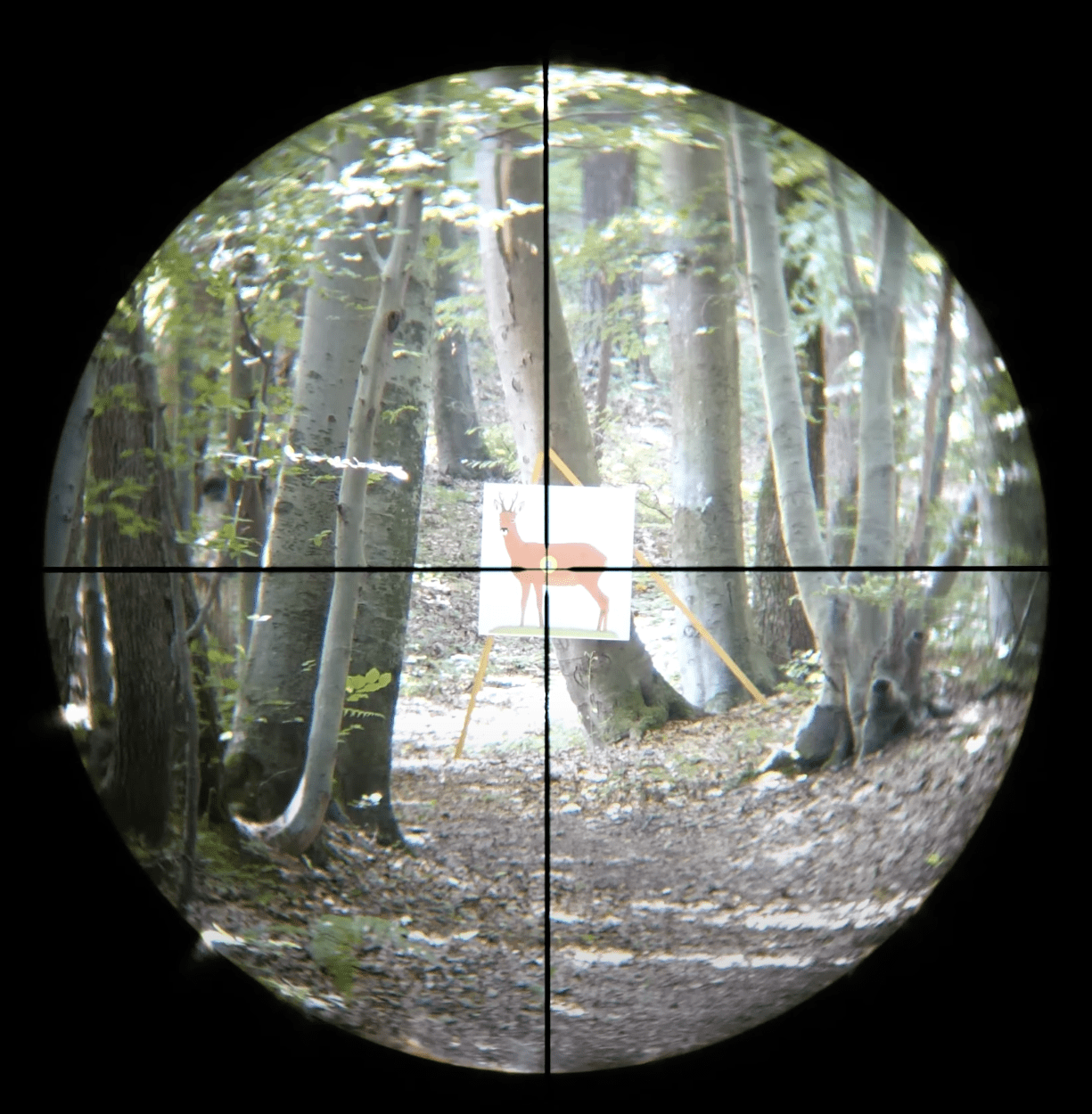
Magnification & Parallax
The classic 3-9x magnification range is executed flawlessly here. The image remains sharp and clear all the way to 9x, with none of the edge distortion you see in cheaper optics. This clarity at maximum power gives you real confidence in identifying your target. The magnification ring is buttery smooth, a small detail that speaks to the overall build quality. I found it easy to adjust on the fly without breaking my cheek weld. The parallax is fixed at a slightly longer 150 yards, which I actually prefer for a hunting scope, as it provides a more forgiving focus range for shots from 75 to 250 yards.
Elevation & Windage Knobs
While still a capped, “set-it-and-forget-it” design, the turrets on the VX-Freedom are a clear step up in quality. The 1/4 MOA clicks are crisp, audible, and precise. Zeroing the scope was a pleasure; there was no “slop” or guesswork involved. After getting it dialed in, I ran a quick three-shot group, made a 2-MOA adjustment up, fired another group, and then dialed back down. The second group was perfectly centered on the first, a testament to their reliability. They aren’t meant for dialing in the field, but they are absolutely dependable for establishing your zero.
Eye Relief & Eye Box
At a feather-light 12.2 ounces, this scope is a dream to handle. It barely adds any weight to a rifle, preserving the quick, lively balance of a compact carbine like the Ruger Ranch. This is its second biggest advantage after the glass. The eye relief is generous and flexible, offering a huge comfort zone for your head. This forgiving eye box allows for fast, almost instinctual shooting. I could throw the rifle to my shoulder and have a perfect sight picture waiting for me every time, which is invaluable in a dynamic hunting situation.
Durability
It’s a Leupold. The name itself is synonymous with durability. Even though it’s remarkably lightweight, the main tube feels incredibly solid and rigid. It’s waterproof, fog-proof, and backed by a lifetime guarantee that follows the scope, not the owner. While I didn’t subject it to the same round count on the punishing AK, it handled a steady diet of 7.62×39 from the bolt gun without any hint of a shift in zero. For a hunting rifle that will see its share of bumps, scrapes, and foul weather, the VX-Freedom offers complete peace of mind.
How It Really Performs
Optical Quality (27/30): The best glass in this lineup, period. Its low-light performance is a genuine game-changer for hunters.
Durability (23/25): Legendary Leupold toughness in a lightweight package. Guaranteed for life.
Usability (15/20): Extremely easy to use, but the simple duplex reticle lacks the versatility of a BDC for this specific caliber’s trajectory.
Value (13/15): You’re paying a premium for top-tier glass and a “Made in USA” stamp, but the performance justifies the cost.
Features (6/10): It’s a very spartan scope. It nails the essentials (clarity, durability) but has no extra features.
See how I test and rate scopes. Learn more
Overall Performance Score: 84/100
Perfect for: The dedicated hunter using a bolt-action 7.62x39mm who prioritizes optical clarity and low-light performance above all else.
Skip it if: You want a BDC reticle for easy holdovers or if you’re outfitting a semi-auto for range use where dialing or hold-offs are more common.
3. Best Budget/Compact: UTG BugBuster 3-9×32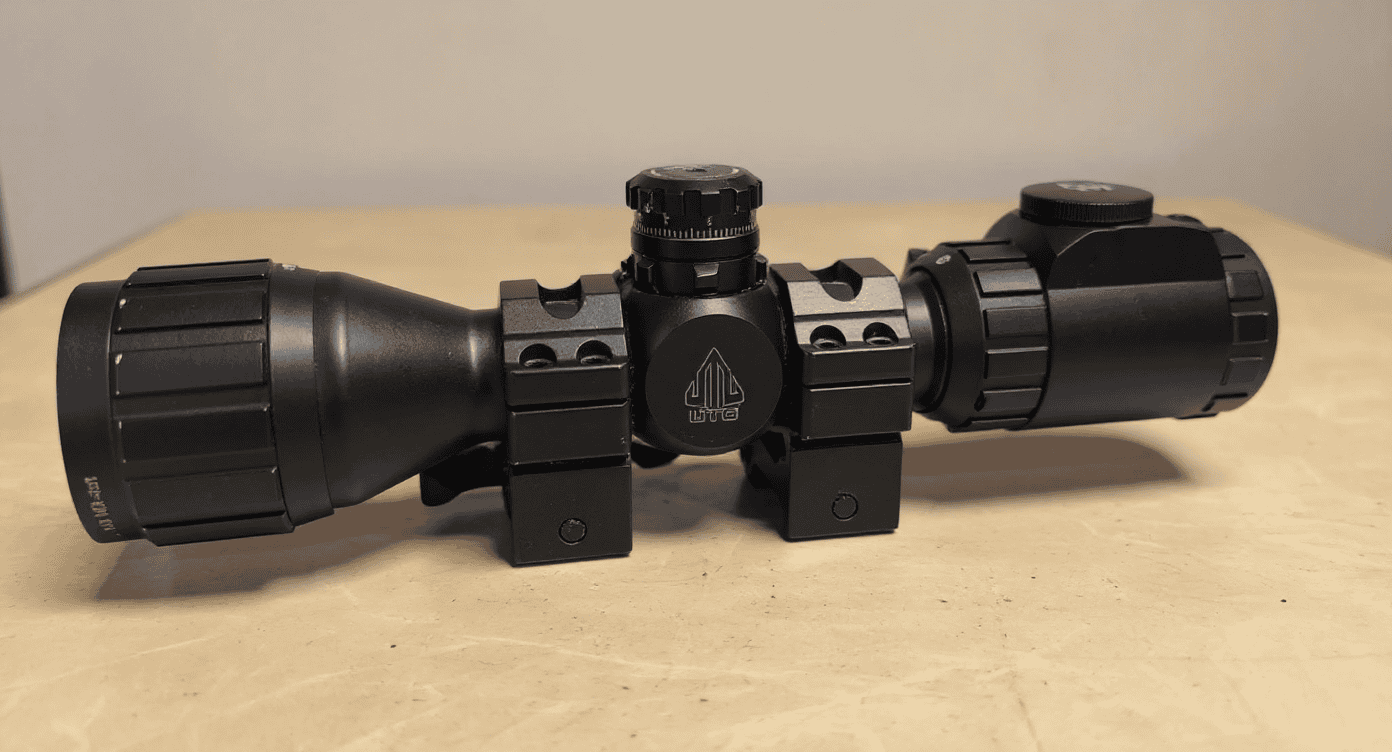
Technical Specifications
| Specification | Value |
|---|---|
| Magnification | 3-9x |
| Objective Diameter | 32mm |
| Tube Diameter | 1 inch |
| Eye Relief | 4.2 – 3.2 inches |
| Field of View | 37.7 – 14 ft @ 100 yds |
| Weight | 13.9 oz |
| Length | 8.5 inches |
| Adjustment Graduation | 1/4 MOA |
| Parallax Setting | Adjustable (3 Yards to Infinity) |
Field Testing Results
| Test Parameter | Result | Rating (A-F) |
|---|---|---|
| Close Quarters Performance (AO) | Crisp, parallax-free image at 10 yds | A+ |
| Turret Lock & Return-to-Zero | Held zero perfectly after adjustments | B+ |
| Zero Retention (AK-47) | 100% after 250 rounds | A |
| Illuminated Reticle Utility | Effective in low light & against dark targets | B |
| Optical Quality for Size | Acceptable brightness, some distortion | C+ |
| Overall Value Proposition | Extremely high features-per-dollar | A+ |
Testing focused on the PSAK-47 GF3 platform to evaluate its performance as a compact carbine optic.
Glass Clarity & Reticle
Given its small 32mm objective lens, the BugBuster’s optical performance was surprisingly decent. The image is brightest in the center, and while it won’t win any awards for low-light gathering against 40mm scopes, it’s perfectly usable in most lighting conditions. The real story is the mil-dot reticle, which offers multiple aiming points for holdovers. What truly sets it apart is the red/green illumination feature. While practicing transitions against dark-colored steel targets under the cover of the range awning, illuminating the reticle in red made it pop, allowing for much faster target acquisition than a standard black crosshair.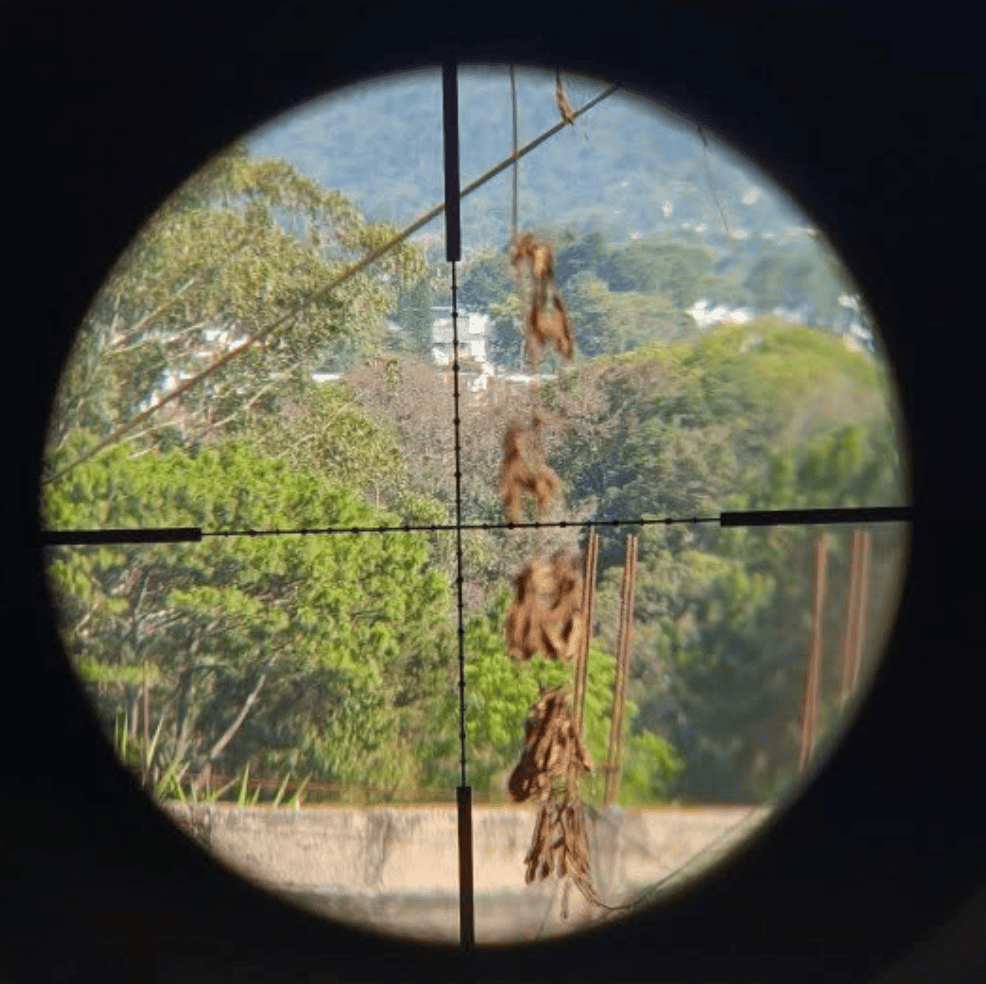
Magnification & Parallax
The BugBuster’s killer feature is its adjustable objective (AO) that focuses down to a ridiculously close 3 yards. This transformed the 7.62x39mm carbine into an incredibly versatile tool. I was able to get a perfectly crisp, parallax-free sight picture on targets just a few paces away, which is impossible with most riflescopes. For a do-it-all rifle that might be used for pest control one day and range shooting the next, this is a massive advantage. The 3-9x magnification works as advertised, though the image quality is sharpest below 7x.
Elevation & Windage Knobs
Here again, the BugBuster surprised me. It features tactical-style turrets that are not only resettable to zero but are also lockable. After getting my 50-yard zero on the AK, I simply pushed the turret down and it locked firmly in place. No amount of bumping or jostling could move it. This is a fantastic feature for a rifle that gets thrown around. The clicks are a bit stiff and not as refined as a high-end scope, but the fact that they are lockable and resettable at this price point is simply phenomenal.
Eye Relief & Eye Box
This is the area where you feel the compromise for the scope’s compact size. The eye relief is listed at 4.2 to 3.2 inches, but in practice, the eye box is noticeably tighter than on the larger Vortex or Leupold scopes. You have to be more consistent with your cheek weld to get a full, clear sight picture, especially at higher magnifications. It’s perfectly manageable once you get used to it, but it’s less forgiving than a full-size optic. This is the trade-off for getting a scope that is a full 3-4 inches shorter than the others.
Durability
Built on UTG’s “True Strength” platform, this scope is designed to withstand harsh recoil. It certainly lived up to that promise on my AK. It held zero without fail through multiple mag dumps and rapid-fire drills that can wreck lesser optics. The package even includes a set of sturdy quick-detach rings, which held their zero surprisingly well when removing and reinstalling the scope. For a budget-friendly optic, its ability to withstand abuse is its most impressive and important trait.
How It Really Performs
Optical Quality (19/30): Serviceable glass for its size. The features of the reticle (mil-dots, illumination) outweigh the raw optical quality.
Durability (22/25): Shockingly tough. It ate the recoil from the AK and the locking turrets are a great feature for maintaining zero.
Usability (19/20): The short length and close-focus AO make it uniquely suited for carbine use. The tight eye box is its main drawback.
Value (15/15): Off the charts. The sheer number of functional features (locking turrets, AO, illumination, included rings) for the price is incredible.
Features (9/10): It has more features than any other scope on this list, full stop.
See how I test and rate scopes. Learn more
Overall Performance Score: 84/100
Perfect for: Shooters with an AK, SKS, or other carbine where rail space is tight and close-range versatility is a priority. The value is simply unbeatable.
Skip it if: You need maximum light-gathering for hunting at dusk, or if you are sensitive to a critical eye box and prefer a more forgiving sight picture.
4. Best for Extended Range: Athlon Optics Neos 4-12×40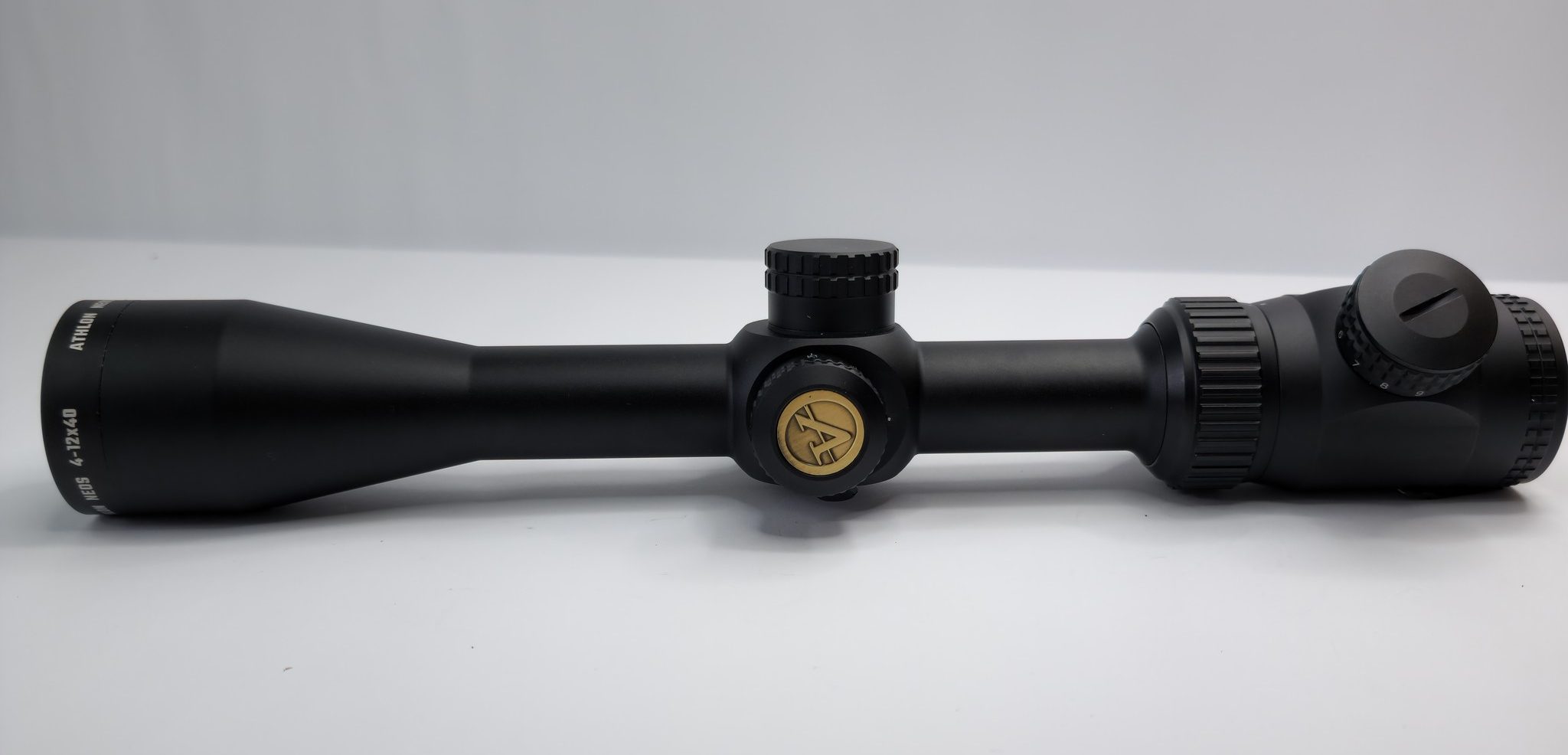
Technical Specifications
| Specification | Value |
|---|---|
| Magnification | 4-12x |
| Objective Diameter | 40mm |
| Tube Diameter | 1 inch |
| Eye Relief | 3.11 – 3.03 inches |
| Field of View | 27.3 – 8.9 ft @ 100 yds |
| Weight | 18.1 oz |
| Length | 12.5 inches |
| Adjustment Graduation | 1/4 MOA |
| Parallax Setting | Adjustable (10 Yards to Infinity) |
Field Testing Results
| Test Parameter | Result | Rating (A-F) |
|---|---|---|
| 100-yard Grouping Potential | Allowed for sub-1.5 MOA groups | B+ |
| Side Parallax Adjustment | Smooth and effective | A- |
| Zero Retention (Bolt-Action) | 100% after 200 rounds | A |
| Clarity at Max Magnification | Slightly soft but very usable | B- |
| Eye Relief Comfort | Noticeably short, requires good form | C |
| Overall Optical Quality | Good for the price, clear sight picture | B |
Testing conducted on a Ruger American Ranch with Hornady BLACK 123gr SST ammunition to maximize precision.
Glass Clarity & Reticle
The Athlon Neos delivers a surprisingly bright and clear image for its cost. While it doesn’t have the rich contrast of the Leupold, the fully multi-coated lenses provide a sharp sight picture that’s more than capable for daytime shooting. The BDC 600 reticle is functional, offering holdover points that can be adapted to the 7.62x39mm with some practice. I found the main crosshair was my primary aiming point for 100 yards, with the first dot below it lining up reasonably well for 200-yard shots on an 8-inch steel plate, making it a viable, if not perfect, solution.
Magnification & Parallax
This is the Athlon’s arena. The 4-12x magnification range provides a noticeable advantage when precision matters. At 12x power, I could clearly see my individual bullet holes on paper at 100 yards, which made shooting for tight groups much easier. This extra power, combined with the side-adjustable parallax knob, is what truly sets it apart. The side focus was smooth and allowed me to dial out all parallax for a rock-solid sight picture at 200 yards, something you can’t do with the fixed-parallax scopes. This feature is a significant step up for anyone serious about accuracy.
Elevation & Windage Knobs
The turrets are capped and functional for sighting-in, similar in principle to the Vortex Crossfire II. The clicks are a bit more defined than the Vortex but still lack the crispness of the Leupold. They did their job reliably during the sight-in process, and I had no trouble getting the rifle zeroed. Like the other BDC scopes in this review, the turrets are meant to be zeroed and then left alone, letting the reticle do the work of compensating for bullet drop.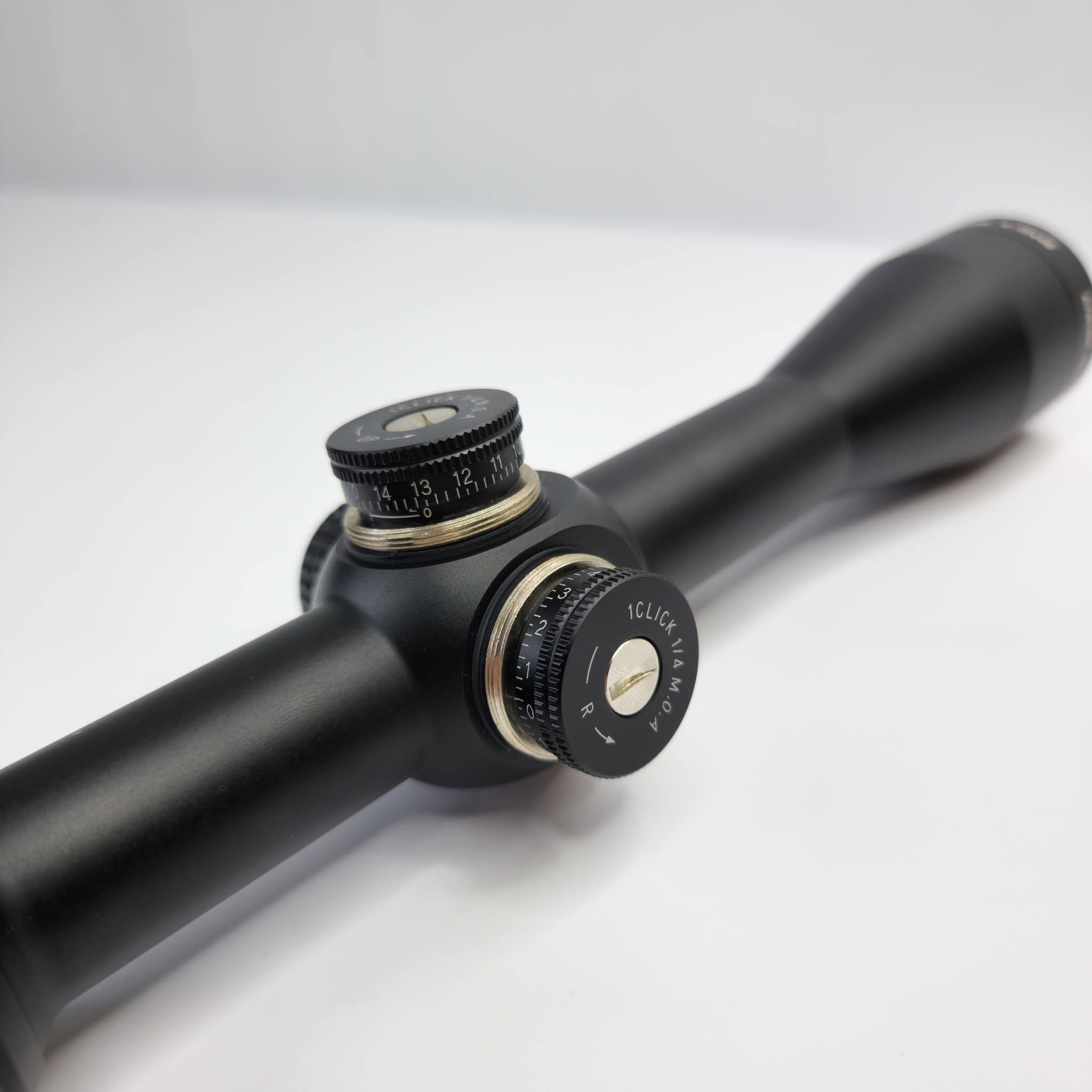
Eye Relief & Eye Box
Here we find the Neos’s primary compromise. The eye relief is the shortest in the test, listed at just over 3 inches. I could feel the difference immediately. It demanded a consistent and disciplined cheek weld, and I had to be careful when mounting the scope to ensure I had enough room. While it was perfectly manageable on the mild-recoiling Ruger Ranch, I would be hesitant to mount this on a harder-kicking rifle. The eye box is also less forgiving than the Vortex or Leupold, tightening up considerably at 12x power. It’s a trade-off for the higher magnification at this price.
Durability
The Athlon Neos feels well-built. The one-piece tube is nitrogen-purged for water and fog-proof integrity, and it handled a full day at the range without any issues. While it is the heaviest scope in the test at 18.1 oz, that heft adds to a feeling of robustness. It held its zero perfectly through all my testing on the bolt-action rifle. Athlon also backs their scopes with a lifetime warranty, which provides excellent peace of mind and makes it a safe investment.
How It Really Performs
Optical Quality (22/30): Good, clear glass that performs well in daylight. Not a low-light specialist, but very capable.
Durability (21/25): Feels solid and is backed by a great warranty. The weight adds to its robust feel.
Usability (17/20): The extra magnification and side parallax are huge assets for precision. The short eye relief holds it back.
Value (14/15): Excellent value. You get features like 12x power and side focus that are rare at this price point.
Features (8/10): Side parallax and a BDC reticle are great features. Higher magnification is the key selling point.
See how I test and rate scopes. Learn more
Overall Performance Score: 82/100
Perfect for: The shooter with an accurate bolt-action or AR-47 who wants to push the 7.62x39mm to its effective limit on targets or steel.
Skip it if: You need long, forgiving eye relief or if you are mounting it on a semi-auto where a more generous eye box is critical for rapid firing.
Choosing the Right Scope for Your 7.62x39mm
Selecting the right scope for a 7.62x39mm rifle is a unique challenge. You’re trying to optimize a cartridge known for its looping trajectory and often used in platforms with harsh recoil impulses. The perfect scope must be a master of compromise: tough, practical, and equipped with a reticle that makes sense.
Reticle: Taming the Trajectory
With a standard 123gr bullet zeroed at 100 yards, the 7.62x39mm can drop over a foot by the time it reaches 300 yards. This makes a Bullet Drop Compensating (BDC) reticle, like the one in the Vortex Crossfire II, an enormous advantage. It provides intuitive holdover points that turn what would be a difficult long-shot into a simple aiming exercise. A mil-dot reticle like the UTG BugBuster’s offers similar capability for those who know their holdovers, while a simple Duplex reticle like the Leupold’s is clean and fast but requires more guesswork for distant targets.
Durability: Can It Handle an AK?
The forward-and-back recoil impulse of a semi-automatic AK or SKS is notoriously hard on optics. A scope’s internal erector springs must be robust enough to handle this repeated shock without losing zero. My testing on the PSAK-47 was designed specifically to weed out the weak. The Vortex and UTG scopes proved they were up to the task, holding zero perfectly. While any of these scopes are suitable for a bolt-action, if your host rifle is a semi-auto, proven durability is not a feature—it’s a requirement.
Compact vs. Full-Size: The Rail Space Dilemma
Many 7.62x39mm platforms, especially AKs and SKSs, have limited space for mounting optics. This is where a compact scope like the UTG BugBuster shines, fitting easily where larger scopes won’t. The trade-off is a smaller objective lens, which gathers less light, and often a more critical eye box. A full-size 40mm scope like the Vortex, Leupold, or Athlon will provide a brighter image and a more forgiving eye box, but you need to ensure you have the rail space and appropriate mount to accommodate its length.
Parallax Adjustment: A Feature for Precision
For general-purpose shooting and hunting inside 200 yards, a fixed parallax scope is perfectly fine. However, if your goal is to shoot the tightest possible groups or engage small targets at distance, a scope with adjustable parallax (like the UTG or Athlon) is a significant advantage. It allows you to eliminate the apparent movement of the reticle on the target, which is a key component of precision marksmanship. The UTG’s ability to focus down to 3 yards makes it uniquely versatile, while the Athlon’s side focus is a more premium and user-friendly feature for longer range work.
Frequently Asked Questions
Can I use a regular hunting scope on an AK-47?
Yes, but with a major caveat: it must be a durable, quality scope. The recoil impulse of an AK can destroy scopes that aren’t built to handle it. All the scopes in this guide were selected for their proven durability, but special attention should be paid to models like the Vortex Crossfire II and UTG BugBuster that have a strong track record on semi-auto platforms.
What is a realistic maximum range for a scoped 7.62x39mm rifle?
While the cartridge is capable of hitting targets further out, its practical maximum effective range for hunting or reliable hits on steel is generally considered to be around 300-400 yards. Beyond this, the steep bullet drop and loss of energy make shot placement very difficult and less ethical for hunting. A scope in the 3-9x or 4-12x range is ideal for this distance.
Is a BDC reticle necessary for 7.62x39mm?
It is not strictly necessary, but it is highly recommended. The significant bullet drop of the cartridge makes a BDC reticle an extremely helpful tool for making fast and accurate shots past 150 yards. It’s the single best feature you can have on a scope for this caliber to simplify holdovers and increase your effective range.
Disclosure
My commitment is to you, the reader. To maintain complete objectivity, I purchased every scope in this guide at retail price through standard commercial channels. I do not accept free products, sponsorships, or paid placements from any manufacturers. My recommendations are based solely on the results of my independent, hands-on field testing. This guide may contain affiliate links, which means I may earn a small commission if you make a purchase through them, at no extra cost to you. This helps support the significant time and expense involved in creating in-depth, unbiased reviews like this one. My reputation is built on trust, and I will never compromise that for a commission.
Final Thoughts
The 7.62x39mm is a profoundly practical cartridge, and it deserves a practical optic to match. The goal isn’t to turn it into a 1,000-yard sniper round, but to enhance its strengths within its effective range. Each of these four scopes achieves that in a different way. The Leupold offers unparalleled clarity for the hunter, the UTG provides incredible features for the carbine enthusiast, and the Athlon gives the precision shooter the tools to reach out. But for my money, the Vortex Crossfire II hits the absolute sweet spot. Its combination of a perfect BDC reticle, proven toughness, and outstanding value makes it the one optic that can truly do it all for the people’s cartridge. Choose the one that fits your mission, and you’ll unlock the full potential of this legendary round.

Hi, I am Jerry L. Miculek and I am experienced firearms and optics expert. Guns are not just a hobby for me, they are my passion and life. You can learn more about me on my About page.